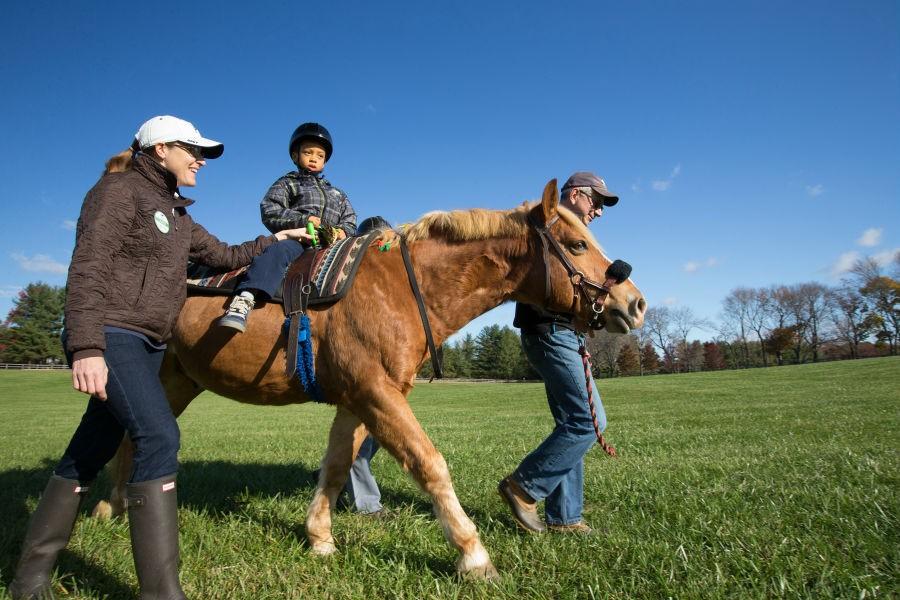Hippotherapy provides variety of physical, emotional benefits
January 31, 2016
I have been around horses in one capacity or another since I was a toddler: English, western, saddle seat, you name it. However, it was only a few years ago that I discovered hippotherapy. Usually when I say the word “hippotherapy” people either assume I’m confused or joking. I always start with a disclaimer, “No, it has absolutely nothing to do with hippos.”
In Latin, hippo means horse; so hippotherapy is just that: therapy through horses. The benefits of hippotherapy are numerous and extremely impactful. Riding a horse is beneficial both physically and mentally, and hippotherapy is used to treat children and adults with physical or mental disabilities, as well as veterans suffering from PTSD and anybody struggling with depression or anxiety.
Physically, the benefits include improved balance, trunk and neck strength and stability, and increased range in fine motor skills. When I volunteered at a Hippotherapy Center in Wisconsin, I remember a girl who had difficulties sitting up straight in her wheelchair and had limited control over the movements of her limbs. However, after just a half hour hippotherapy session, she displayed a calmness in her arms and legs, as well as increased ability to sit up straight for long periods of time.
Hippotherapy is beneficial mentally as well. When working with horses, clients are introduced into a partnership between animal and human. They have another life to care about, and this connection brings about an increased sense of empathy and confidence. The inexplicable bond that forms between rider and horse may be the most transformative aspect of hippotherapy.
The second question people ask me about hippotherapy is: where and how can I volunteer? The cool thing about hippotherapy is that horse experience is not required; there are important jobs that do not include handling horses if you are not comfortable with that aspect. Sidewalkers are volunteers that walk on either side of the horse and offer support to the rider if he or she needs it. Sometimes this support comes in the form of a steadying hand or even just conversation. Side walkers help the rider to successfully perform the tasks assigned to them by their therapist.
Although it is sometimes difficult to find hippotherapy centers in urban and suburban areas, I was lucky to find the Hanson Center. The Hanson Center is located in Burr Ridge, and isn’t more than ten minutes from Nazareth. I encourage anyone who may be interested in hippotherapy, or even anyone who loves horses, to give volunteering a try. For me, volunteering at the Hanson Center is such a rewarding and transformative experience because it combines my love of horses with my love of meaningful service. I am so lucky that something I am passionate about can be used to improve quality of life for so many people.
It is so incredible to see riders transcend their disabilities while on the back of a horse. No longer is someone bound to a wheelchair or crutches; instead there are four sturdy and unfailing legs to carry them. Can you imagine the feeling of freedom?
One memory that I have of hippotherapy will stick in my mind forever. There was a little boy who I was sidewalking for who couldn’t have been more than five years old, perched upon a huge grey mare. About halfway through the session he asked me the name of the horse he was riding. When I told him that her name was Angel he said to me, “Oh, that makes sense! It’s because she helps me fly, right?”

